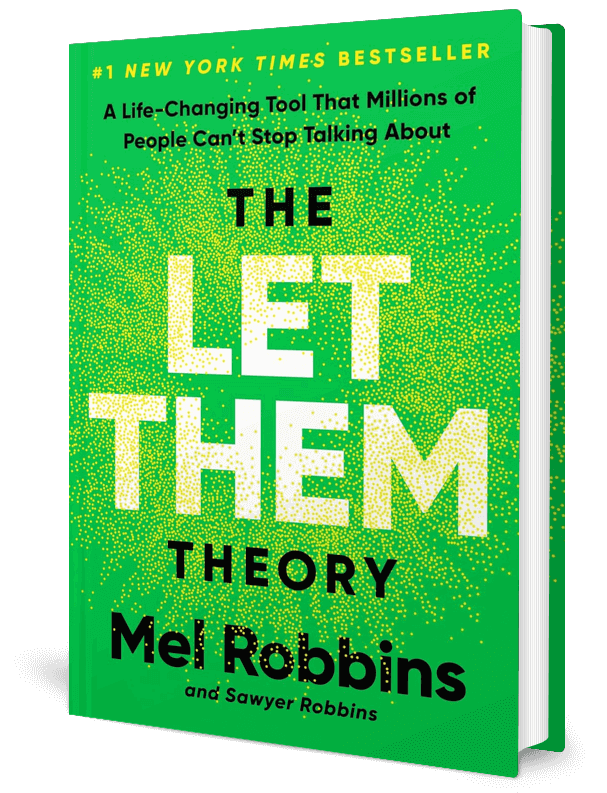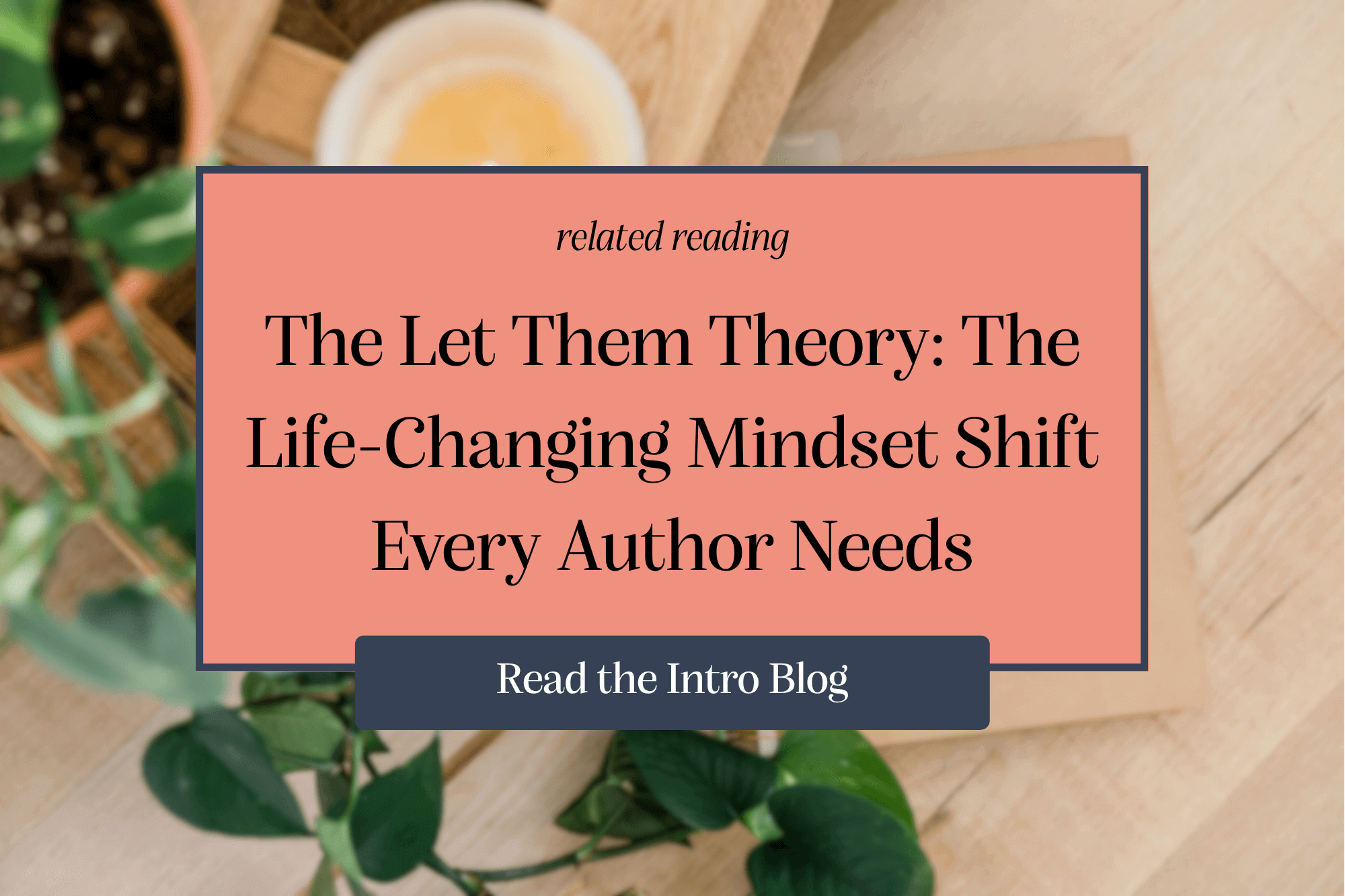Let Them Question Your Hybrid Approach
Picture This:
You're at a writing conference.
That familiar buzz of excitement fills the hotel conference room as authors swap business cards and publishing war stories.
You've just struck up a conversation with a fellow novelist, and she asks about your publishing journey. You light up—this is exactly the kind of conversation you'd hoped to have here.
"Well," you begin, "my first two books were traditionally published through a mid-size press. It was a great learning experience. Then I decided to self-publish my third book because I wanted more creative control and faster time-to-market. I'm actually considering both options for my next project, depending on which serves the story and my business goals better."
Her expression shifts. What started as genuine interest now looks like... confusion? Concern?
"You need to pick a lane!" she says with the confidence of someone dispensing obvious wisdom. "You're confusing your brand. Are you traditional or indie? You can't be both."
Suddenly, the strategy that felt smart and sophisticated five minutes ago feels scattered and unfocused.
Maybe she's right. Maybe you are sending mixed messages. Maybe you should just stick to one publishing path and stop confusing everyone—including yourself.
But what if her need for simple categories is actually her limitation, not your strategic flaw?
What if your hybrid approach is exactly the kind of sophisticated business thinking that builds sustainable author careers?
This is where the Let Them Theory becomes essential for authors navigating the modern publishing landscape.
Just as we explored with self-publishing judgment, the pressure to fit into neat categories often comes from other people's discomfort with complexity, not from any actual business necessity.
The "Pick a Lane" Pressure That Limits Your Options
The publishing industry loves clear categories.
Traditional publishers prefer exclusive relationships—they want to know you're committed to their path.
Literary agents often view self-published books on your resume with suspicion, wondering if you're truly serious about traditional publishing.
Meanwhile, some corners of the indie publishing community can view hybrid authors as fence-sitters or sellouts, not fully committed to the indie revolution.
This pressure to choose sides creates an artificial either/or mentality that doesn't serve modern authors well.
You're expected to declare yourself either "traditional" or "indie" and stick with that identity throughout your career, as if publishing paths were political parties requiring lifelong loyalty rather than business tools to be used strategically.
The myth of brand confusion is perhaps the most persistent argument against hybrid publishing.
Industry professionals often project their own concerns onto reader behavior, assuming that readers care deeply about the logos on book spines or the behind-the-scenes business decisions authors make.
In reality, readers follow authors they love regardless of how those books reach them.
They're looking for great storytelling, compelling characters, and satisfying reading experiences—not publisher pedigrees.
When fellow authors, industry professionals, or even family members see your hybrid approach, they often misinterpret strategic business decisions as inconsistency or indecisiveness.
They don't understand that you might choose traditional publishing for a book that benefits from extensive distribution and marketing support, while selecting indie publishing for a project that needs faster time-to-market or more experimental creative elements.
The pressure points are constant:
"Which are you, traditional or indie?"
"You're sending mixed messages to your audience."
"Publishers won't take you seriously if you self-publish too."
"Indie readers don't trust authors who also go traditional."
"You're just trying to play both sides."
Each comment carries the implicit message that successful authors pick one path and stick with it, when the reality is that the most successful authors often use whatever tools serve their current project and career phase best.
Let Them Need Simple Categories
Here's where the Let Them Theory becomes your business advantage: You stop trying to fit into other people's narrow definitions of what an author career should look like.
Let them think success requires choosing one path and never deviating.
Let them believe that switching strategies shows weakness or confusion rather than adaptability and strategic thinking.
Let them not understand that different projects might have different needs, different timelines, different target audiences, and different business objectives.
Let them be confused by authors who refuse to stay in neat boxes.
Let them assume you're trying to "have it both ways" rather than understanding that you're maximizing opportunities in a rapidly evolving industry.
Let them stick to their chosen publishing path while you explore all available options.
Let them limit themselves to one set of tools while you build expertise across multiple approaches.
Let them miss the learning opportunities, networking benefits, and revenue diversification that comes from understanding different segments of the publishing industry.
Most importantly, let them judge your flexibility while you build a more robust, adaptable career.
Their need for simple categories is about their comfort, not your success.
Your job isn't to make other people comfortable with your business strategy—it's to build the creative career that serves your goals and values.
Let Me Use Every Tool in the Toolbox
While you're letting them maintain their either/or thinking, you get to embrace the strategic advantages of hybrid publishing.
Let me choose the best publishing path for each individual project. Not every book has the same needs. My literary fiction novel might benefit from the prestige and bookstore placement that comes with traditional publishing, while my romance series might thrive with the creative control and higher royalty rates of indie publishing.
Let me evaluate each project based on its specific market, my current career phase, my financial goals, and my desired timeline.
Let me learn from multiple publishing experiences. Working with traditional publishers teaches me about professional editing processes, marketing strategies, and industry relationships. Self-publishing develops my entrepreneurial skills, design sensibilities, and direct reader engagement abilities.
Each path offers different learning opportunities that make me a more well-rounded author-entrepreneur.
Let me build multiple revenue streams and reader touchpoints. Traditional publishing might get my books into libraries and bookstores where new readers discover me, while indie publishing allows me to respond quickly to reader demand and maintain higher profit margins on digital sales.
Different publishing paths create different discovery mechanisms, giving me more ways for readers to find my work.
The success stories prove this approach works.
Hugh Howey strategically maintained indie rights for his core series while licensing other opportunities traditionally.
Colleen Hoover built a massive indie following before traditional publishers came calling, and she's maintained strategic flexibility across both paths.
Andy Weir self-published The Martian as a serial on his blog, then worked with traditional publishers for the book release and subsequent novels while maintaining the option to go indie for future projects.
These authors understand what hybrid publishing really is: portfolio career thinking applied to publishing.
Just as financial advisors recommend diversifying investments to manage risk and maximize returns, hybrid authors can diversify their publishing strategies to create more stable, adaptable careers.
Strategic Hybrid Publishing in Practice
Communicating your hybrid approach confidently starts with reframing the conversation.
When someone asks whether you're traditional or indie, try one of the following:
"I choose the publishing path that best serves each individual project and my career goals at that time."
"I'm fortunate to have multiple options available to me as an author."
"Different books have different needs—I match the publishing strategy to the project."
Making strategic decisions about publishing paths requires asking the right questions for each project:
What are my timeline needs for this book?
How important is creative control versus professional support?
What are my financial goals and current situation?
Where is my target audience most likely to discover this book?
What do I want to learn from this publishing experience?
These questions help you make decisions based on business strategy rather than external pressure or one-size-fits-all thinking.
Building a cohesive author brand across different publishing methods is simpler than industry professionals make it sound.
Your brand is you—your voice, your themes, your reader experience—not a single book, publishing path, or even your publisher's logo.
Consistent quality, professional presentation, and clear communication about where readers can find your work matter far more than maintaining publishing path purity.
Managing expectations with industry professionals requires being upfront about your hybrid approach during submissions and building relationships with agents, editors, and other professionals who understand strategic flexibility.
The publishing industry is evolving, and the most forward-thinking professionals recognize that hybrid careers often represent smart business thinking rather than lack of commitment.
Your Career, Your Strategy
The most liberating realization for hybrid authors is this: Your publishing strategy doesn't need to make sense to anyone else.
Readers care about great books, not publishing pedigree. Your career success depends on making smart decisions for your specific circumstances, not on fitting into categories that make other people comfortable.
When you stop expending energy trying to justify your strategic flexibility to people who prefer simple answers, you can focus on what actually matters: writing great books, building sustainable revenue streams, and creating the career that aligns with your values and goals.
Hybrid approaches are becoming more common as authors recognize the benefits of strategic flexibility. The people insisting you must "pick a lane" will eventually have to confront an industry where lane-changing is the norm, not the exception.
Your job is to make strategic decisions that serve your career goals, not to make other people comfortable with those decisions.
Let them question your hybrid approach while you build the diverse, adaptable, successful creative career that wouldn't be possible if you limited yourself to their narrow definitions.
Next time, we'll explore another publishing pressure that affects authors regardless of their chosen path: "Let Them Rush Your Timeline"—because once you've decided how to publish, everyone will have opinions about how quickly you should be doing it.
This post is part of the Let Them Theory for Authors series. Explore the complete series for more insights on building creative confidence and professional boundaries.













